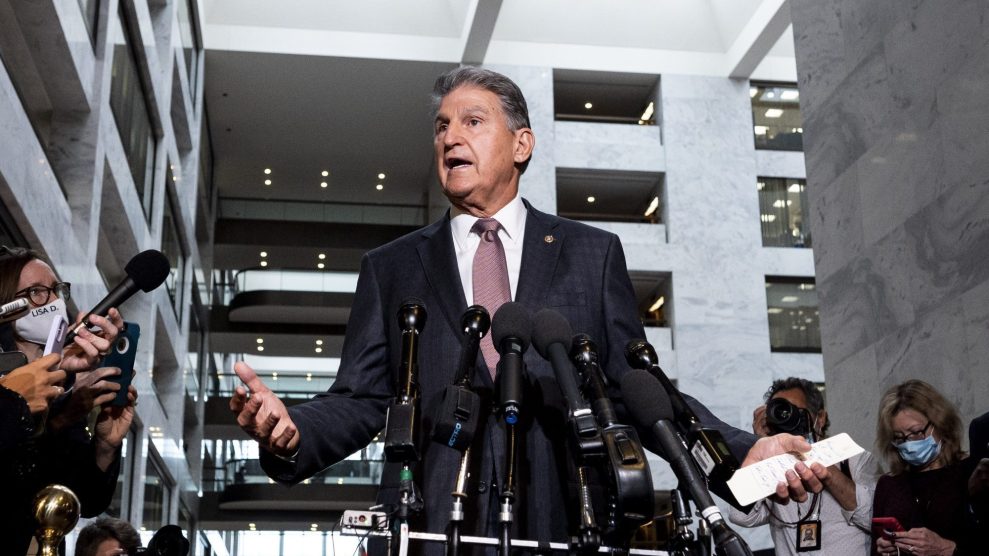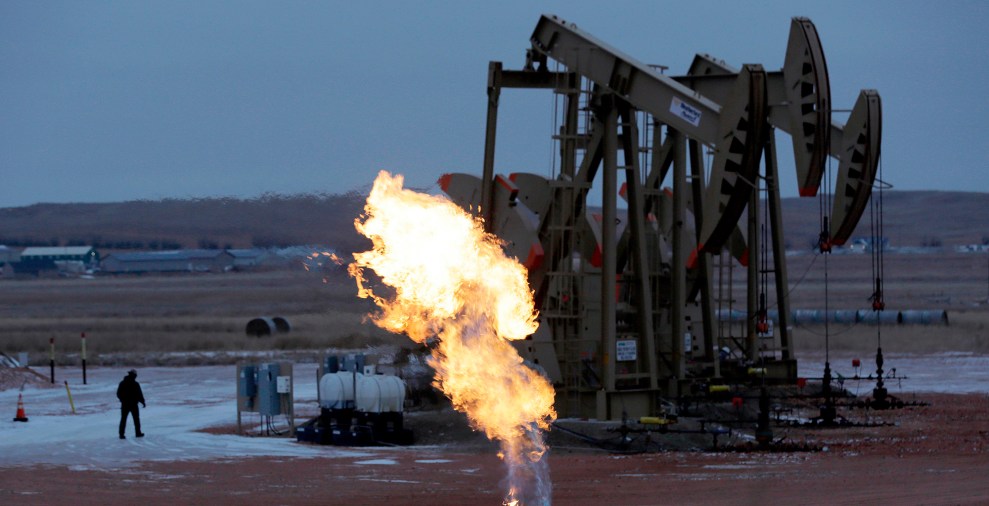
Protesters in Sheffield, England, push for more action at the UN Climate Conference underway in Glasgow.Tim Dennell/Flickr
This story was originally published by YaleE360 and is reproduced here as part of Climate Desk.
It was a statistic that shocked many in Glasgow Monday. An examination of delegation lists by the human rights group Global Witness found that fossil fuel companies and their trade associations have more than 500 representatives registered at the climate conference, more than the biggest national delegation, Brazil.
Fossil fuel lobbyists have a perfect right to be at the event, of course. And they are almost certainly outnumbered by environmentalists among the 11,000-plus non-governmental delegates. But what are they trying to achieve?
Have they bolstered holdouts against banishing coal and ending oil exploration? Are they even now pushing back against putative plans from the British hosts to announce a globally agreed target for cutting aviation emissions? Will their influence pave the way for massive investment in carbon-offset schemes—a path already heavily trodden by oil giants Shell and Total?
Fossil-fuel companies insist they are in town to help delegates manage the transition to a low-carbon world through green technologies and emissions trading. But many of them have a track record of denial and obfuscating climate science. “Their influence is one of the biggest reasons why 25 years of UN climate talks have not led to real cuts in global emissions,” says Murray Worthy from Global Witness.
Aside from fossil fuel companies, the corporate world has played a skillful game in Glasgow, often receiving plaudits for signing up to new versions of pledges they have made before—and often failed to adhere to before.
More than 450 hedge funds, insurers, and bankers—including Citi, Morgan Stanley, BlackRock, and Bank of America—have declared their desire to green their financial portfolios to help drive the world to net-zero emissions by 2050. British conference president Alok Sharma, himself a former financier, was so impressed that he told a room full of them last week that “you are the new Swampys,” a reference to a British environmental activist famous in the 1990s for living in trees to prevent their removal for new roads.
But Paul Griffiths of the French business school EM Normandie this week pointed out that many of these financiers also signed up two years ago to UN “principles of responsible banking” that included aligning with the Paris climate agreement—with no discernible impact on their portfolios.
Meanwhile, agricultural commodity traders such as Cargill and Wilmar have lined up with governments to banish deforestation from their supply chains. But several of them—including Cargill and Wilmar—made the same promise at the UN in New York in 2014, and have allegedly since been complicit in rising deforestation rates in Brazil and elsewhere. Greenpeace UK’s head of forests, Ann Jones, said these companies have made “a litany of broken promises, while they continue to wreck forests and destroy the lives and livelihoods of Indigenous peoples.”
Still, the corporate chiefs may mean it this time. And who, other than them, is going to deliver the cheap, clean power, electric vehicles, green steel, and sustainably sourced commodities that the world so badly needs? Is capitalism the problem or the solution? Such questions occupy many after-hours drinking sessions in Glasgow this week.
The worst headlines that many industry leaders with patchy climate track records have attracted so far in Glasgow arose from their seeming addiction to private jets. By some estimates, around 400 aviation gas-guzzlers flew into Scotland as the conference opened last week, carrying among many others Jeff Bezos, who had $2 billion in his back pocket for greening agriculture. (Joe Biden’s team came in four larger planes, including Air Force One, which carried a fleet of armored vehicles as well as delegates.)
Forbes noted that even a small plane making the journey to Glasgow from Rome, where many had been at the G20 summit the previous weekend, would emit around six tons of CO2. This, for many delegates, is not so much irony as blasphemy. It reinforces the analysis by the Stockholm Environment Institute showing that the average carbon footprint of the richest 1 percent on the planet “is on track to be 30 times higher than what’s needed to limit global warming to 1.5 C.” That’s some 70 tons per person annually, rather than the required 2.3 tons.
The institute predicts that this select 80 million or so of the world’s richest will increase their emissions twice as fast as those of the rest of us by 2030. They seem to have “a free pass to pollute,” said Naftoke Dabi of aid charity Oxfam, which commissioned the study.
We can be fairly sure that few of the 1 percent—mostly cocooned in an air-conditioned world—will be among the billion people that the UK Met Office today predicts will be the victims of life-threatening heat stress, if global temperatures rise by 2 degrees C in the coming decades.
Heat stress is estimated by what meteorologists call the “wet-bulb” temperature, measured by wrapping a thermometer bulb in a wet cloth. It is somewhat lower than the actual air temperature and reflects the body’s ability to cool down. Once the wet-bulb temperature reaches 35 degrees C (95 degrees F), close to body heat, we can no longer cool ourselves by sweating. Death may follow within a few hours.
Past studies have found that a few million people are at risk of being exposed regularly to such wet-bulb temperatures in future decades, mostly in the Middle East. But the Met Office analysis uses an international standard for heat stress applicable to people doing physical work, which is set at a wet-bulb temperature of 32 degrees C (90 F). By this measure, one in eight of the world’s people—mostly in densely populated tropical countries such as India, Ethiopia, and Brazil—will be at risk.
Another study, set for publication later this week, is expected to catalogue rising death rates in the past two decades in one region of Indonesia already suffering excess heat due to a combination of climate change and deforestation.
Such grim prognoses raise the prospect that air conditioning may soon be needed for up to a billion people, just to keep them alive. So it should be no surprise that, as the conference goes down to the wire this week, the price tag for keeping developing countries habitable is rising. Negotiators are discussing the right level for climate finance after 2025, when the current pledge from rich nations to deliver $100 billion annually to developing nations expires.
African nations, with the support of major Asian countries such as China, India, and Indonesia, are reported to have called for a new post-2025 benchmark of $700 billion per year, rising to $1.3 trillion after 2030, with money split equally between reducing emissions and adapting to a changing climate and rising sea levels.
They are also demanding that this should be “new money.” That imperative is made the more pressing after an analysis of existing climate finance, published Monday night, found that the majority of supposedly additional climate finance is currently just existing overseas development aid “badged with a climate objective.”
The aid charity CARE International claims that in 2018, only 46 percent of climate finance was clearly in addition to aid spending levels before the $100-billion target was agreed in 2009. The rest, said CARE’s John Nordbo, was “smoke and mirrors.”








